It’s a good workday when we find ourselves learning something new from our fellow professionals. I had the pleasure of experiencing this recently while connecting with Nearmap, an Esri partner of many years. Nearmap is a leading provider of instant-access high-resolution aerial imagery, city-scale 3D reality models, and geospatial tools that integrate with GIS, CAD, and BIM tools.
I’ve been aware of aerial photography from an architecture, engineering, and construction (AEC) point of view, having used basic orthographic images combined with CAD on a couple of urban renewal projects, and I was eager to get an update on the topic.
I was reminded about the uniqueness of aerial photography—the information collected presents a bird’s-eye view of the characteristics on the ground. But there is much more to it than just a picture taken from the sky. These photographs—both individually and when combined— provide a wealth of information for the AEC industry. The richness of the data, once collected, merged, and analyzed, opens the door to a wide range of workflows throughout the project life cycle.

Mercedes-Benz Stadium Construction | Atlanta, GA
Anyone who has ever used a handheld or car-based map app is acquainted with the landscape as seen from above. We hear about satellites on the news or might see them overhead on a clear night as they orbit, some capturing images, albeit at low resolution. And by now most people have been exposed—either hands-on or through close connection—to drones used in the AEC industry. All these sources of imagery are important, and the images that are collected are useful for many workflows in AEC. However, satellite imagery lacks the necessary detail for many tasks and drone photography lacks the consistency needed for other jobs. I’ve come to learn that, for many important built-world tasks, HD aerial imagery is just right.
Yet, getting frequently updated, and amazingly clear image-based information ready to be applied to planning, design, construction, or ongoing operations, takes work. That’s where Nearmap comes in. The company is flying the skies, processing the data, and building software to deliver valuable aerial imagery to the professionals and stakeholders creating and operating our built world.
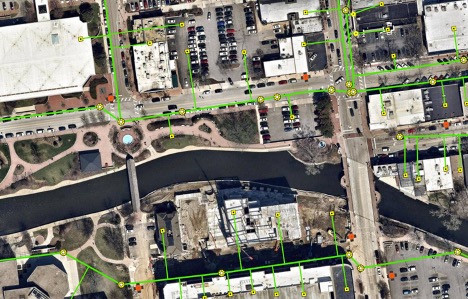
Utility Infrastructure, March 2019 | Naperville, IL
Although both maps and aerial imagery present a bird’s-eye view of the earth, aerial photographs are not maps. Maps are orthogonal representations of the earth’s surface; they are directionally and geometrically accurate. Aerial imagery are created using lens-based photography.
Nearmap addresses the challenge of wide-angle versus low-accuracy image capture through its patented, airplane-mounted camera systems. This allow the capture of wide land areas in a short amount of time, while capturing at an extremely high resolution. The company solves the challenge of turnaround from capture to valuable data through its photogrammetric processing that enables accurate, fast and recent captures.
I’m usually the person asking all the questions in class, so my chat with Nearmap included getting an explanation of the science and math of photogrammetry. The aerial photographs serve as the basis for making measurements, preparing maps, creating digital elevation models, and more. Photogrammetric operations applied to individual and multiple photos of a scene help determine distances and angles when measuring on a photograph. The math and science utilize relief displacements and image parallax to establish object heights. Through those concepts (distance, angles, displacements, and parallax), photogrammetry enables the preparation of HD digital elevation models and the creation of orthophotographic images.
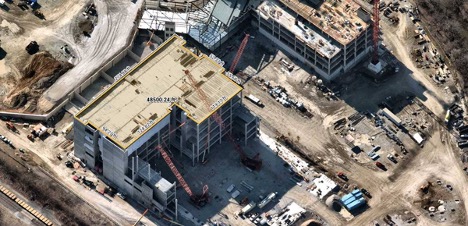
Construction Progress and Validation, April 2020 | Indianapolis, IN
Imagery for planning, designing and more
My recently acquired knowledge on these topics comes from Nearmap and HDR, a customer of both Esri and Nearmap. Ranked No. 6 in Engineering News-Record’s Top 500 Design Firms, HDR provided several examples where accurate, high resolution and up-to-date aerial imagery was critical in developing and communicating solutions for a variety of customers’ challenges. In my quest for knowledge on aerial imaging used in real-world workflows, HDR framed the benefits it into the following three areas:
Imagery for planning—For anyone working in early phase project work, at the conceptual and schematic phases, there is no need to struggle in developing and recreating the existing world when it already is available through accurate, high resolution and up-to-date aerial photography such as that provided by Nearmap. Recommendation: Focus on the proposed design, which is the area where the client needs your time spent. Existing imagery can be used to fill in surrounding areas and provide context.
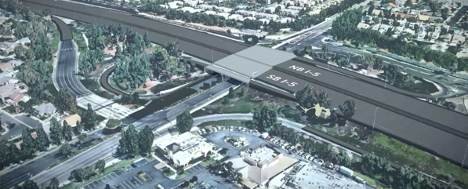
Interstate 5 Overpass| Tustin, CA
Imagery for design—Having dabbled in neural networks in the mid ‘90s, my interest was piqued when HDR started describing its web portal neural network used for infrastructure object identification. When discussing imagery for design, HDR experts showed how me minimal human input had taught an image-based artificial intelligence (AI) system to identify infrastructure features from the reality mesh. Using 45 square miles of 3D Nearmap reality models combined with point cloud datasets, this AI solution found barriers, signs, poles, roads, rail lines, drainage, and more. Linear features, point features and surfaces were generated, creating an amazingly detailed existing context model. This model greatly accelerated and improved detailed design decision-making.
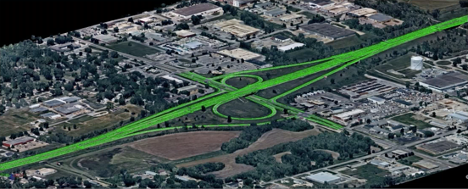
Iowa Integrated Corridor | Des Moines, IA
Imagery for a digital twin—HDR is currently working on a mega project in a major metropolitan area. It’s a 10-mile-long project with above- and below-ground components. HDR is leveraging the project’s CAD, BIM, and GIS layers with terrestrial, aerial and mobile scanning to produce a very thorough basis of a digital twin. Because of the high-profile, high-impact nature of the project, the use of accurate, high-resolution, and up-to-date aerial imagery data will be used to inform immediate and future infrastructure design decisions. Project teams and community stakeholders will gain a deeper understanding and improved awareness of their project’s impact and importance.
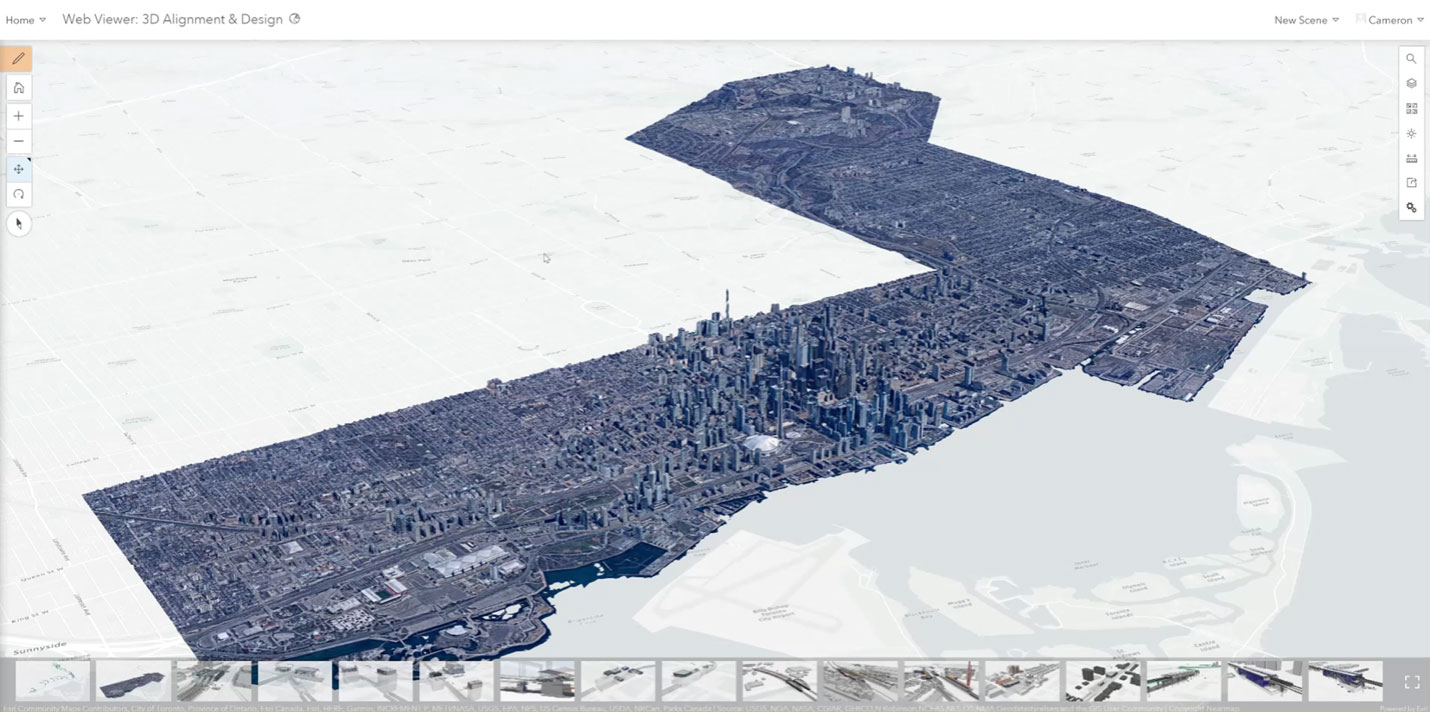
HD City-scale Imagery | Toronto, Canada
Conclusion:
There is considerable potential for orthorectified aerial photographs and 3D-textured meshes to help answer many current and pressing infrastructure challenges and ecological questions. From reconstructing historical ecosystem conditions to characterizing the evolution of our built worlds, the use of accurate, high-resolution and recent imagery in design and engineering work is invaluable.
To dig into these examples and more, watch the on-demand recording of the aerial imagery webinar for AEC professionals, hosted by Esri and Nearmap with industry experts HDR and Cardno. Watch on-demand

